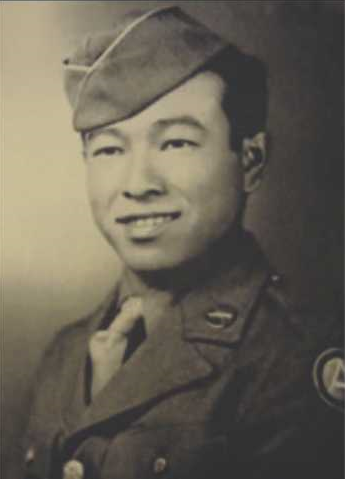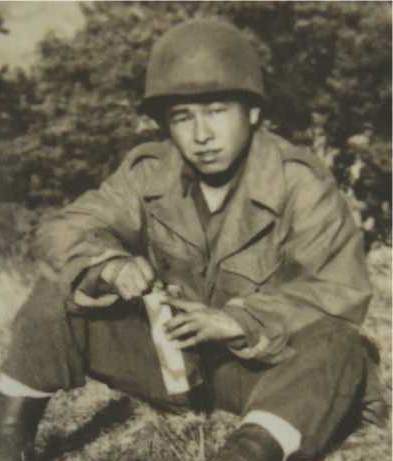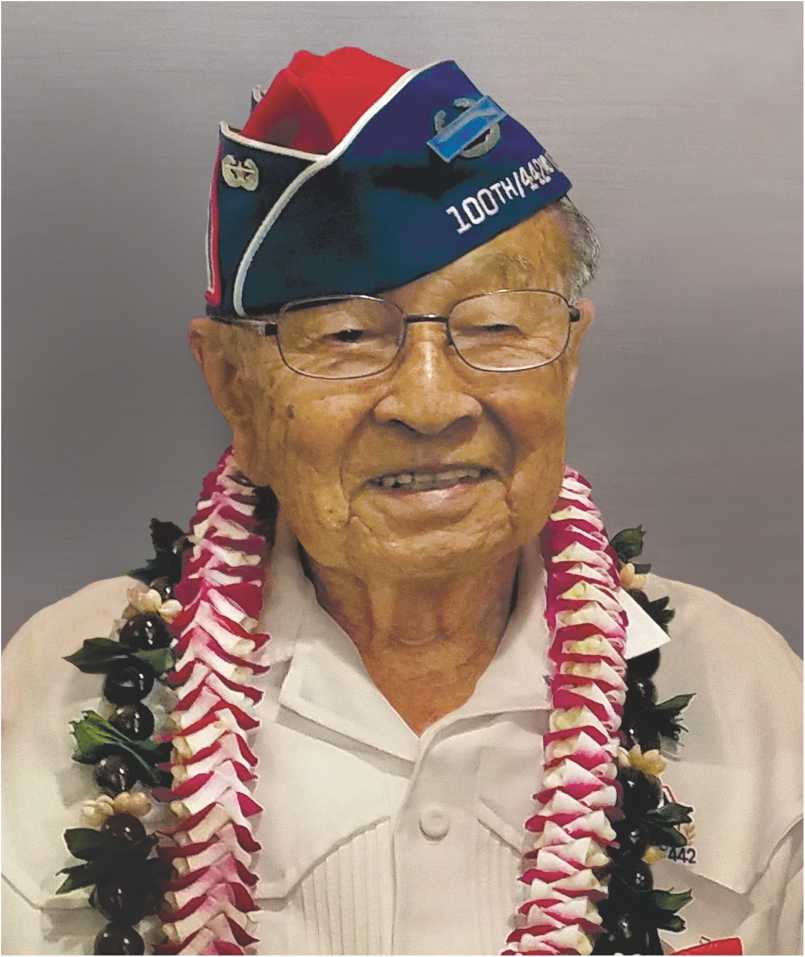
Masaharu Suzuki
Private First Class
442nd Regimental Combat Team
Antitank Company
Masaharu Suzuki was born on September 29, 1921, in Honolulu, Territory of Hawaii. Known to his friends as “Masa” and to his Army buddies as “Petite,” he was the second child of six born to Jokichi and Nobu (Goto) Suzuki.
His parents emigrated from Fukushima Prefecture to Hawaii in 1907 and 1919, respectively. They found work in the sugar cane plantations in Puunene, Maui, and then in Ewa, Oahu. The Suzuki family lived in Waiau, and at different mill camps in Aiea. Life was not easy at that time, so at age 13 Masaharu and his older brother Tsuneo worked to support the family by finding jobs in the plantation fields doing “hoe hana” (weeding) and eventually as cane carriers at the sugar mill in Aiea. Later, Masa was employed as a carpenter and worked at the Makalapa Navy Housing Project.
Masa signed his draft registration card on February 15, 1942, Local Board No. 9 located at August Ahrens School in Waipahu.
In 1943, the call came to volunteer for a segregated Japanese American army unit. Masa and thousands of Nisei men enlisted. He not only wanted to serve his country, but he saw it as a way to see the world beyond Hawaii. He enlisted on March 23, 1943. Barely 5’2” tall, he just passed the height requirement by standing on his tiptoes. At the induction ceremony, Masa remembered feeling patriotic and excited for this new adventure – but he couldn’t understand why his mother was crying. Only after they were sent to Italy and he saw his first American KIA did he understand her sadness. Until then, the danger of being wounded or killed was not something he thought could happen to him.

Pfc. Masaharu Suzuki served in the Antitank Company in Italy and France, as the “Bazooka Man.” During the Rome-Arno Campaign, the company was secretly sent to an airfield near Rome for glider training in preparation for the Allied invasion of Southern France.
Right: Pfc. Suzuki during the war
Masa recalled how dangerous it was to equip and operate the wooden gliders. He and his Antitank comrades landed behind the German lines with the airborne invasion to prevent the Nazis from receiving support, or escaping from the beachhead assault. They were victorious – southern France was liberated and their critical seaports supporting the Allied forces two months ahead of schedule.
Although he experienced trauma and grief from the loss of comrades he served alongside, many of his fondest memories and lifelong friendships were formed during his time in the 442nd. He kept in contact with families he met while in basic training in Hattiesburg, Mississippi, and with many of the men in the Antitank Company.
For his wartime service, Masaharu Suzuki was awarded the Bronze Star Medal, Good Conduct Medal, American Campaign Medal, European-African-Middle Eastern Campaign Medal with four bronze stars and a bronze arrowhead, World War II Victory Medal, Army of Occupation Medal, Distinguished Unit Badge, Combat Infantryman Badge, and Glider Badge. (Note: The bronze arrowhead is a device added to the European-African-Middle Eastern Campaign Ribbon indicating that he participated in a combat glider landing.) He was awarded the Congressional Gold Medal on October 5, 2010, along with the other veterans of the 100th/442nd Regimental Combat Team. This is the highest Congressional Civilian Medal.
After returning to Hawaii on December 5, 1946, on the troop ship USAT Evangeline, Masa’s cousin introduced him to her friend from Fukushima, Yuri Shibuya. Masa and Yuri married in 1950 and both worked for the Dillingham family as gardener and maid with living quarters on their estate at Diamond Head. Masa later found work as a firefighter stationed at the Pearl Harbor Naval Shipyard, Sub Base, and advanced to become Captain of the unit.
He also owned and operated Leeward Termite & Pest Control during and after his retirement from firefighting. People around Aiea knew him as the “Termite Man” in the green pickup truck.
An active member of the Soto Mission of Aiea Taiheiji, Masa served as Treasurer for over 40 years. He was integral in organizing the many annual church events, and was also a dedicated member of the Aiea Taiheiji Yagura Gumi (Bon Dance Taiko Group). He visited the church nearly every day and saw it as his job to keep things running smoothly.

Masa was a member of the 442nd Veterans Club and attended many events over the years.
Left: Suzuki in his 442nd Veteran’s uniform shirt and garrison cap
Masa and Yuri had five daughters together: Karen (husband Ron), Susan, Pat (husband Rusty), Pam (husband Carl), and Diane. They have three grandchildren: Mark (wife Moana), Matt (wife Kathy), and Rachel. They also have three great-grandchildren, sadly, all born after his passing: Tyson, Rui, and Lainey.
Masa had many interests and hobbies. He loved to sing, ballroom dance, read, and tell a good story. He dabbled in photography, doing magic tricks, and making balloon animals. Everyone enjoyed the entertaining guessing games he created for parties. One of his favorite things was being around and meeting people. He found friendships with folks of all ages and could start a conversation with anyone. For years, he made daily excursions to the coffee shop at Bakery Kapiolani in Aiea Shopping Center and spent hours talking stories with whomever was there. After the bakery closed, he and a group of retirees would gather, drink coffee, and hang out at the next best place, McDonald’s.
Some of Masa’s favorite things: a pocket knife; his recliner; Zippy’s turkey neck soup (oxtail soup style); and searching for the flavor of the original Eagle Cafe’s braised short ribs, which he never found.
In June 2016 at the age of 94, Masa passed away at his home in Aiea with his children and grandchildren by his side. He is buried at National Memorial Cemetery of the Pacific at Punchbowl, Section B, Site 1339-A. If you’re ever at Punchbowl, he would love a visit.
Researched and written by the Sons & Daughters of the 442nd Regimental Combat Team and the Suzuki family in 2021.
